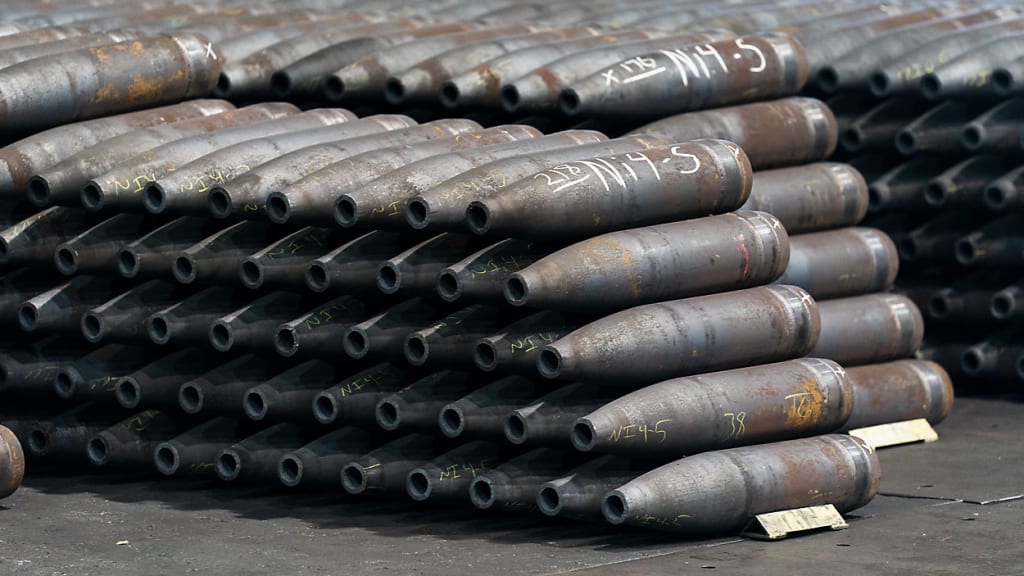Inside the US Factory Making Ukraine’s Most Important Ammo
Pennsylvania Factory

This Pennsylvania factory makes Ukraine's most important ammunition. 155-millimeter shells are basically giant bullets used in artillery pieces. The ammunition factory in Scranton has been making steel grenades since 1953, and today demand is so great that it produces 11,000 each month. Ukraine could fire more than half of them every day
The U.S. arms them during shortages at the beginning of the war, the air force was expected to be the key to a Russian victory
They outnumbered Ukraine ten to one in military aircraft, but Ukraine found ways to shoot down Russia's fighters
Shoot down Russia's fighter planes and defend against its missile attacks
The problem was that most of Ukraine's artillery weapons were still from the Soviet era
Soviet era and required munitions produced mainly by Russia and its supporters China and North Korea
Therefore, Ukraine asked the U.S. and its allies NATO for help, and the U.S. alone sent
The U.S. alone sent Ukraine about 200 artillery pieces that required ammunition they already had in stock 155-millimeter shells are one of Ukraine's most important weapons 155-millimeter shells are the perfect balance between power and weight they're fired from howitzers, which are basically a combination of a cannon and a mortar these massive guns fire shells these massive guns fire shells high into the air, so that they fall down on their targets 155-millimeter shells are small enough to fire up to 20 miles, but still do a lot of damage They're filled with 24 pounds of TNT and explode on impact, throwing deadly shrapnel in all directions They're also less expensive than fancier weapons Javelinjavelin anti-tank missiles can cost up to $78.000 dollars, while these projectiles can be had for as little as eight hundred dollars. The Scranton Army Ammunition Plan makes the steel projectiles for the U.S.'s most basic 155-millimeter round, the m795. The U.S. produces 24,000 of them a month, nearly twice as many as before Russia invaded Ukraine, and nearly half of them come from this factory
Workers transport steel bars to the next phase, the forging shop Four robotic saws cut the bars into 14-inch-long pieces called billets Efficiency is the key to speed Then they're heated to 2,000 degrees Fahrenheit for an hour, which softens them so they're easy to shapeDoh then machines stretch and shape the billets into their final shape Another adds a nose, which makes them aerodynamic they enter the press they're still a tube when they leave the press they're nowa projectile they're inspected and then fed to the production floor then the grand finale workers workers reheat the billets and then cool them in a 6,000 galloncapacity oil bath. After the final turning and polishing, workers hang the racks on hooks and give them a fresh coat of paint
There, soldiers add the fuse and turn the shell into a deadly bomb. 155-caliber grenades have been used by the United States and its allies since World War I. They were small enough to hit targets up to seven miles away, but powerful enough to penetrate enemy trenches. II 155-millimeter shells became the standard artillery size for NATO countries after the war
GPS guidance systems equipped, costing more than a hundred thousand dollars per projectile. Since the beginning of the war, all NATO allies have provided some form of military assistance to Ukraine. They have donated tanks, anti-aircraft guns, rocket launchers and missile defense systems. The United States tops the list. They have sent about $42 billion worth of weapons to Ukraine
Germany has sent Ukraine so many shells that it has only 20,000 left in its stockpile, which is only enough for a few days of intense fighting Critics fear the same could happen to the United States.The U.S. has sent more than 2 million 155-millimeter shells to Ukraine, but most of that is from its own stockpile, which it uses to train soldiers and support other allies, while the true status of the national stockpile is a closely guarded secret
About the Creator
Nida Rafiq
I love to write, creating captivating stories that enthral readers. Reading is my passion, I have a wealth of knowledge, exploring everything from philosophy to technology, infusing my work with profound insights.





Comments
There are no comments for this story
Be the first to respond and start the conversation.